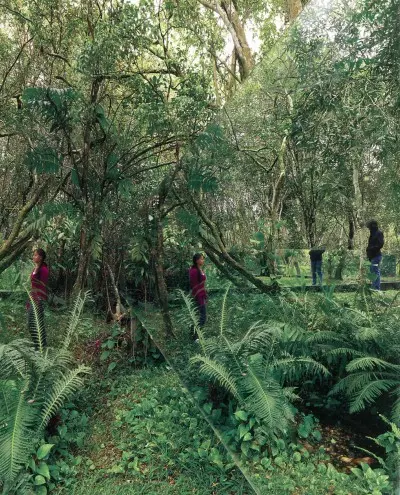LATIN AMERICA 2010
Luis Fernández-Galiano
Las Américas bicentenarias
The Bicentennial Americas
México Mexico
Miquel Adriá
México, la persistencia de la tradición
Mexico, the Persistence of Tradition
Museo de Arte Contemporáneo, México D.F.?MUAC, Mexico D.F.
Teodoro González de León
Escuela de Artes Plásticas, Oaxaca?School of Plastic Arts, Oaxaca
Mauricio Rocha
Museo del Chocolate, Toluca?Chocolate Museum, Toluca
Michel Rojkind
Casa Kasuga, México D.F.?Kasuga House, Mexico D.F.
El Cielo Arquitectos
Colombia Colombia
Jorge Pérez Jaramillo
Colombia, el resurgir social y urbano
Colombia, the Social and Urban Revival
Biblioteca España, Medellín?España Library, Medellín
Giancarlo Mazzanti
Colegio Las Mercedes, Medellín?Las Mercedes School, Medellín
Juan Manuel Peláez
Biblioteca Pública, Villanueva?Public Library, Villanueva
Torres, Piñol, Ramírez & Meza
Casa-jardín Taller Croquis, Cali?Taller Croquis House-Workshop, Cali
Husos
Brasil Brazil
Roberto Segre
Brasil, las ideas en el laberinto
Brazil, the Ideas in the Labyrinth
Escuela Pública FDE, São Paulo?FDE Public School, São Paulo
Forte, Gimenes & Marcondes Ferraz
Edificio de oficinas, São Paulo?Office Building, São Paulo
Triptyque
Centro Midrash, Río de Janeiro?Midrash Center, Rio de Janeiro
Isay Weinfeld
Casa Río Bonito, Nova Friburgo?Rio Bonito House, Nova Friburgo
Carla Juaçaba
Argentina Argentina
Alberto Petrina
Argentina, el despertar de la provincia
Argentina, the Awakening of the Province
Mausoleo Juan y Eva Perón, San Vicente?Perón Mausoleum, San Vicente
AFRA-LGR-Fernández Prieto
Edificio de viviendas, Buenos Aires?Residential Building, Buenos Aires
Diéguez-Fridman Arquitectos
Museo de Bellas Artes, Córdoba?Fine Arts Museum, Córdoba
GGMPU Arquitectos
Quincha I y II, Rosario?Quincha I and II, Rosario
Rafael Iglesia
Chile Chile
Fernando Pérez Oyarzún
Chile, la materia y el paisaje
Chile, Matter and Landscape
Edificio de oficinas, Providencia?Office Building, Providencia
Alberto Mozó
Hotel Remota en Patagonia?Remota Hotel in Patagonia
Germán del Sol
Caseta y miradores turísticos?Shelter and Viewpoints for Tourists
Grupo Talca
Casa Parr, Chiguayante?Parr House, Chiguayante
Pezo & Von Ellrichshausen
Luis Fernández-Galiano
The Bicentennial Americas
Latin America celebrates in 2010 the bicentennial of its independence. The Bolivarian Venezuela begins the commemorative cycle on 19 April,?Argentina will follow on 25 May, Colombia on 20 July, Mexico and Chile on 16 and 18 September. These last four countries – along with Brazil, which separated from Portugal in 1822 – form the mosaic of this issue, which tries to take stock
of the current rise of Latin American architecture, and made to coincide with this anniversary. The dispersion of dates, up to a dozen years, shows the complexity of the independence processes, and also explains the diversity of the republics that emerged from the struggle with the Spanish monarchy: a crop of countries that have gone through periods of stagnation and prosperity, and that now hesitate between authoritarian populisms and the democratic reformisms of ‘success stories’ like the Chile of Lagos and Bachelet or the Brazil of Lula, a country which has become the leader of a continent that opens to the world while being able to expand through its emerging multilatinas.
If the first centenary of the start of the Peninsular War and the Latin American wars of independence were used for reconciliation – from the Hispano-French Expo of 1908 in Zaragoza to the International?Expo of 1910 in Buenos Aires –, the second could bring historical revisions able to deconstruct many patriotic myths on either side of the Atlantic. The French?Revolution saw the dark side of Terror grow during the celebrations of the bicentennial in 1989, and neither Columbus in 1992 nor Vasco de Gama in 1998 came out unscathed of the fifth centenary of their maritime feats, even though they deserved major Expos in Seville or Lisbon. Today, the Latin Americas celebrate 200 years of independence conscious of the tangled union of heroism and horror in conflicts that in the end were civil wars, and knowing as well that the outcome meant swapping a political dependence for an economic one that has shaped their development since, drawing a fragmented landscape that has spurred generous uprisings, fierce guerrillas and withered revolutions.
Amid these lights and shadows, where the nativist – and often academic – rejection of the art ‘of the goths’ coexisted with the fertile ‘two-way’ mixture of words, forms and music, the native and Creole America was nurtured by the vital flow of European immigrants until it gave us back our image in the mirror, and now it offers a flowering of architectural talent that hopes to measure up with the achievements of their extraordinary writers. Triggered by a new political and social climate, but also by the economic changes of the 1990s and by the recent boom in commodities, this generation of projects deals at once with the most significant urban problems of the continent – represented on our cover by the iconic España Library, in the exemplary Medellín of the former mayor Sergio Fajardo – and with the most intimate reflections of their authors, as illustrated on the opposite page by the evanescent and solemn tomb built by the Paraguayan Solano Benítez for his father: these two images condense the new ‘meditation of the young town’ proposed here through the works that follow.








